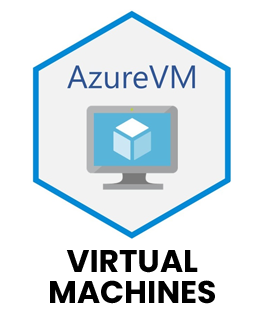Syllabus of Microsoft Azure AI Engineer Associate Certification Online Trainiing Course
Module 1: Analyze solution requirement
- 1. Recommend Cognitive Services APIs to meet business requirements
- 2. Choosing a Microsoft cognitive services technology
- 3. Microsoft Azure Cognitive Services: The Big Picture
- 4. Microsoft Azure Cognitive Services: Custom Vision API
- 5. Precision versus Recall
- 6. automated-ml#precision-recall-chart
- 7. Performance measures in Azure ML: Accuracy, Precision, Recall and F1 Score
Module 2: Map security requirements to tools, technologies, and processes
- 1. Bot Service Compliance
Module 3: Select the software, services, and storage required to support a solution
- 1. Machine learning at scale learning-at-scale
- 2. Designing an Intelligent Edge in Microsoft Azure (By Jared Rhodes)
- 3. Azure IoT reference architecture
- 4. Azure IoT reference architecture (Detailed PDF)
- 5. Choosing a real-time message ingestion technology in Azure
Module 4: Connecting IoT Devices to Azure: IoT Hub and Event Hubs
Module 5: Sentiment analysis on streaming data using Azure Databricks
- 1. Build a real-time recommendation API on Azure
- 2. storage required to store logging, bot state data, and Cognitive Services output
- 3. Choose the right data store
- 4. Warehouse
- 5. Azure Data Lake Analytics
- 6. Azure Data Lake Store
- 7. Cosmos DB Global Distribution:
- 8. Install the Azure IoT Edge runtime on Debian-based Linux system
- 9. Deploy Azure IoT Edge modules from the Azure portal
- 10. Creating an image recognition solution with Azure IoT Edge and Azure Cognitive Services
- 11. IoT edge built-in modules
- 12. Stream Analytics
- 13. Another option for stream analytics is Apache Spark in Azure Databrick or HDInsigt, or Apache Storm in HDInsight
- 14. Apache Storm
- 15. Anomaly detection using machine learning in Azure Stream Analytics
- 16. Built-in ML based Anomaly Detection
Module 6: Anomaly detection in Azure Stream Analytics
- 1. Real-Time ML based Anomaly Detection in Azure Stream Analytics (same as above but demo with Raspberry Pi)
- 2. Anomaly Generator (Git)
- 3. Performing sentiment analysis by using Azure Stream Analytics and Azure Machine Learning Studio
- 4. Real-time analytics on IoT Edge with Azure Stream Analytics
- 5. Azure Stream Analytics now available on IoT Edge
Module 7: Design AI Solutions
Module 8: Design solutions that include one or more pipelines
- 1. What is Azure Machine Learning
- 2. Predict automobile price with the visual interface
- 3. Create and manage Azure Machine Learning service workspaces
- 4. AI Pipelines
- 5. Azure Machine Learning Pipeline
- 6. AML Samples:
- 7. Get Started with Azure Machine Learning
- 8. How to use Notebooks with Azure Machine Learning workspace
- 9. Choose a Compute target
- 10. Deploy a model to an Azure Kubernetes Service cluster
- 11. Deploy a model using a custom Docker image
- 12. Azure Data Factory
- 13. Data Science Virtual Machine
- 14. Data Science Virtual Machine
- 15. AI Data Science Virtual Machine
- 16. Learning Virtual Machine
Module 9: Design solutions that uses Cognitive Services
- 1. Cognitives Services Directory
- 2. Classify images with the Microsoft Custom Vision Service
- 3. Speech Service Documentation
- 4. Bing Web Search API Documentation
- 5. What is Custom Decision Service?
Module 10: Design solutions that implement the Bot Framework
- 1. Building a bot
- 2. Bot Framework Emulator
- 3. Data sources for QnA Maker content
- 4. Best practices of a QnA Maker knowledge base
- 5. LUIS (Language Understanding Intelligent Services)
- 6. Entity types and their purposes in LUIS
- 7. Composite entity
- 8. List entity
- 9. Enterprise-grade conversational bot
Module 11: Design the compute infrastructure to support a solution
- 1. What are field-programmable gate arrays (FPGA)
- 2. Inside the Microsoft FPGA-based configurable cloud
- 3. Hyperscale hardware: ML at scale on top of Azure + FPGA
- 4. GPUs vs CPUs for deployment of deep learning models by Fidan Boylu Uz
- 4. Reference architecture: Machine Learning model training with AKS
- 5. Deploy Deep Learning CNN on Kubernetes Cluster with GPUs – AML version
- 6. Deploying Deep Learning Models on Kubernetes with GPUs
- 7. Design Data for Governance, compliance, integrity & security
Module 12: Implement and monitor AI solutions
Module 13: Implement and AI Workflow
- 1. IoT Hub
- 2. AML Services
- 3. AML Sample
Module 14: VS Code extension for Azure Machine Learning
Module 15: Integrate AI services with solution components
- 1. Azure IoT reference architecture
- 2.Add authentication to your bot via Azure Bot Service
Module 16: Monitor and Evaluate the AI environment
- 1. Overview of alerts in Microsoft Azure
- 2. Monitor your Azure Machine Learning models with Application Insights
- 3. Add telemetry to your bot
- 4. Bot analytics
Module 17: Understand automated machine learning results
- 1. Other useful materials
- 2. Developing AI Models in Microsoft Azure
- 3. Managing Microsoft Azure AI Solutions
- 4. Microsoft Azure Developer: Creating and Integrating AI with Azure Services
- 5. AI-100: Designing and Implementing an Azure AI Solution — Study Guide
- 6. MLOps Workshop
- 7. Microsoft Cloud Workshop library
- 8. Creating an image recognition solution with Azure IoT Edge and Azure Cognitive Services








































